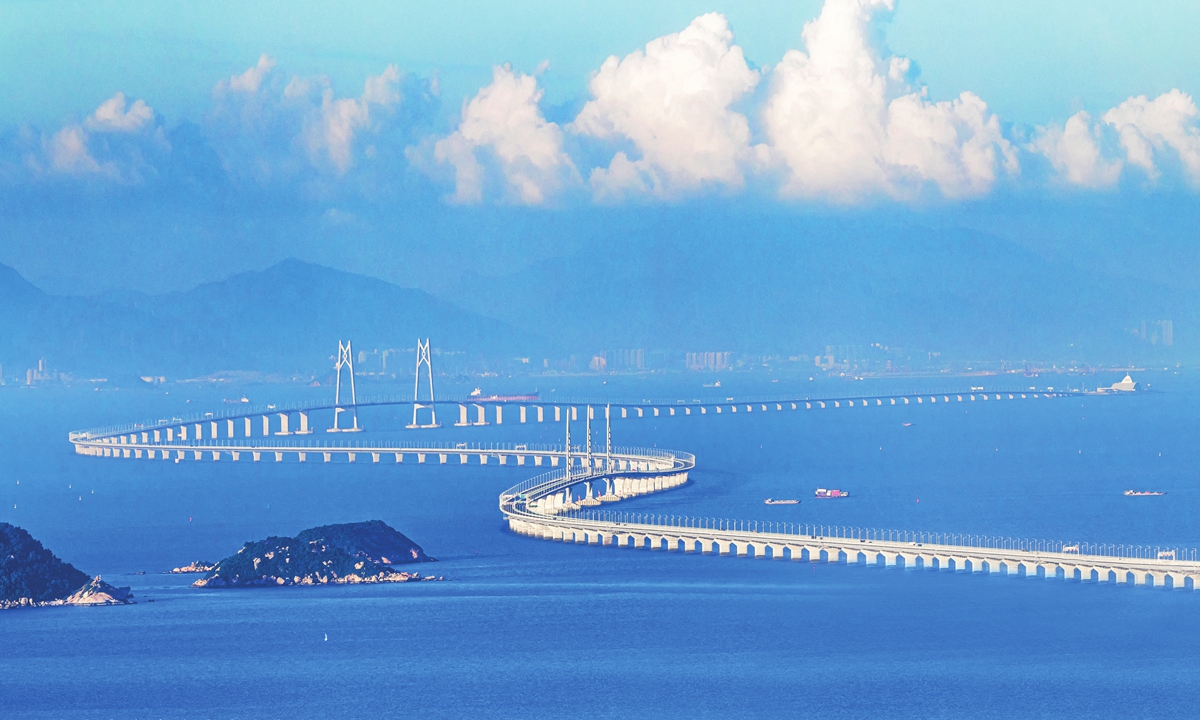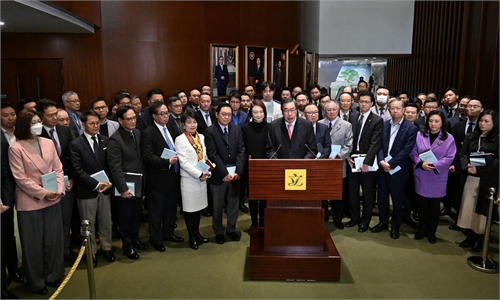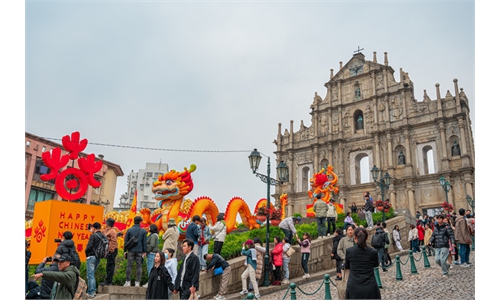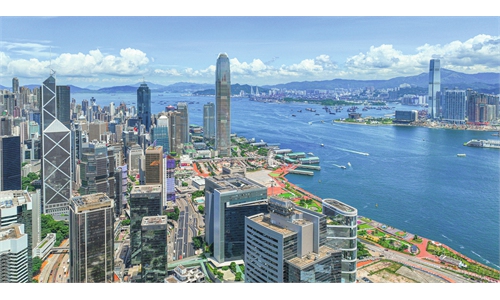HK, Macao, Chinese mainland could launch multi-stop, culture-themed travel products to boost inbound tourism: political advisor

Hong Kong-Zhuhai-Macao Bridge Photo: VCG
The Hong Kong and Macao Special Administrative Regions (SARs) could consider organizing a joint "multi-stop" combination with "Chinese culture-themed" travel products from Chinese mainland cities, while taking advantages of the SARs' roles as global hubs and transit points to boost inbound tourism market, Pansy Ho Chiu-king, a member of the National Committee of the Chinese People's Political Consultative Conference (CPPCC) and group executive chairwoman and managing director of Shun Tak Holdings, told the Global Times during the two sessions.
China's inbound tourism has been on a recovery trajectory since last year, with support measures including easing visa requirements and improved travel products.
In early March, China announced that it will waive visa requirements for citizens from six European countries- Switzerland, Ireland, Hungary, Austria, Belgium and Luxembourg- signaling the country's commitment to attract more foreign visitors, effective on March 14.
"Hong Kong and Macao are top destinations for international tourists thanks to their unique geographic location, historical background and diverse culture," Ho said. She is also the vice chairman of the All-China Federation of Industry and Commerce.
Ho noted that local industry practitioners in the two SARs are good at operating domestic and foreign social media platforms and launching multidimensional and interactive travel promotions. Such efforts would draw more international tourists to learn about and experience Chinese culture.
Ho suggested that the two SARs, along with localities in the Chinese mainland, could develop an in-depth "multi-stop" trip that last for six to 10 days, allowing international tourists to deeply immerse themselves in Chinese culture.
The advantages of the SARs lie in their mix of Chinese and Western culture, as the local travel industry in both places has developed a clear understanding of overseas tourists' habits and needs, ranging from language and communication, currency exchange and consumption habits, to dining and accommodation experiences.
"This new travel model facilitates the integration and regional coordinated development of the [Guangdong-Hong Kong-Macao Greater Bay Area (GBA)]. It also promotes the dual circulation of the economy and provides more job opportunities," Ho said, adding that it is also beneficial for the construction of China's soft power.
In the longer-term vision of 10 years, she added that the "multi-stop journey" style of tourism will not only attract people to the GBA but will also have a radiation effect on more places across China.
With regard to the development of the GBA, Ho said that a "one-hour commuting circle" among the area's city clusters has basically taken shape under the "Northbound Travel for Hong Kong Vehicles" program implemented in July last year.
The policy allows private car owners from Hong Kong to drive to South China's Guangdong Province via the Hong Kong-Zhuhai-Macao Bridge without having to apply for a Chinese mainland private vehicle registration plate.
As of Saturday, more than 500,000 private cars from Hong Kong had entered Guangdong, China Media Group reported. In February in particular when the Spring Festival holidays fell, the number of Hong Kong-licensed vehicles surpassed 100,000 for the first time in a single month, expanding over 1,490 percent from July.




